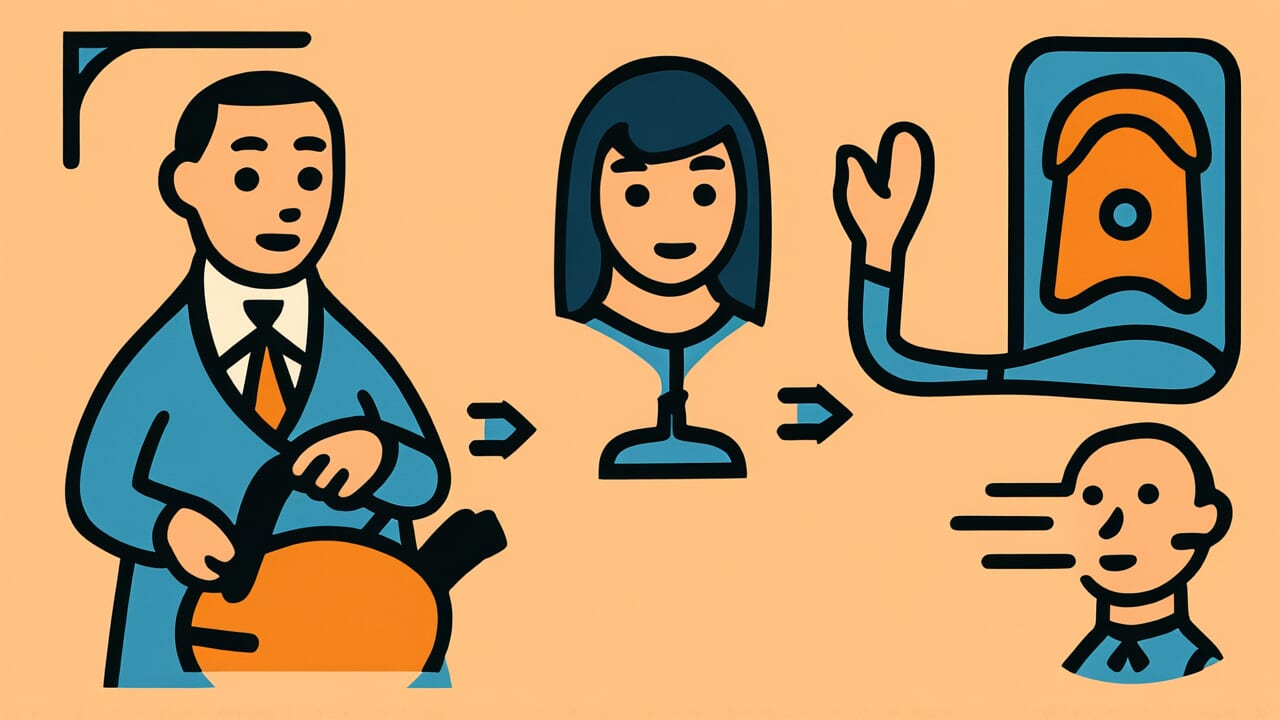How to Read “The crooked many do not accept the straight”
Shūkyoku wa choku wo irezu
Meaning of “The crooked many do not accept the straight”
This proverb means that in a group where most people hold wrong ideas, those with correct thinking cannot be accepted.
Crooked people tend to exclude opinions that differ from their own, even when those opinions are right.
This saying is used to point out situations where wrongdoing or mistaken customs have spread throughout an organization or group.
It describes what happens when the majority moves in the wrong direction. People who speak the truth become isolated or pushed out.
Even today, we see this pattern often. Dishonest workplace practices, bullying structures in schools, and online pile-ons all show this dynamic.
When the majority leans toward error, those who stand up for what’s right often face attacks.
This proverb accurately captures such situations. It serves as a warning about the dangers of group psychology.
Origin and Etymology
The exact origin of this proverb in historical texts has not been clearly identified.
However, it is believed to be an expression influenced by classical Chinese thought, especially Confucianism.
“Shū” means many people. “Kyoku” refers to crooked people, those who stray from reason. “Choku” means those who walk the right path.
In ancient China, the virtue of rulers and the nature of the people were important themes.
Confucius taught that “government is righteousness.” He believed correctness was the foundation of politics.
At the same time, people recognized the reality that the majority is not always right. This saying likely emerged from that philosophical background.
The proverb came to Japan through Chinese classics. It began appearing in moral instruction books during the Edo period.
While studying bushido and Confucianism, people valued this saying. It taught the difficulty of maintaining justice without following the crowd.
The contrasting expressions “crooked” and “straight” are visually clear. This made them suitable for conveying moral teachings.
The difficulty of maintaining correctness within a group is a universal theme across time. This is why the saying has been passed down to the present day.
Usage Examples
- An employee who pointed out accounting fraud was demoted. This is exactly “the crooked many do not accept the straight.”
- I spoke up at the class meeting to stop bullying, but became a target instead. I truly experienced “the crooked many do not accept the straight.”
Universal Wisdom
“The crooked many do not accept the straight” reveals a cruel truth about human nature.
When people form groups, individual conscience becomes numb.
Why do people in groups participate in wrongdoing they would never do alone?
The answer lies in the human “need to belong.” We are social creatures who instinctively fear being excluded from groups.
Even when those around us move in the wrong direction, speaking out risks losing our place.
The majority tries to justify itself through numbers. It sees those who voice dissent as threats.
What’s more serious is that crooked people lack awareness of being crooked.
Instead, they criticize the righteous as “unable to read the room” or “lacking cooperation.”
Values cultivated within a group gradually become absolute standards. Logic emerges to exclude those who don’t conform.
This structure has remained unchanged from ancient times to today.
Witch hunts, village ostracism, organizational cover-ups, collective online attacks. The same human nature repeats itself in different forms.
This is why our ancestors continued to issue warnings through these words.
When AI Hears This
In topology, a coffee cup and a donut are treated as “the same shape.”
This is because the essential property of having one hole is preserved through continuous transformation.
Conversely, objects with different numbers of holes cannot transform into each other, no matter how hard you try.
The relationship between a dishonest organization and an honest individual actually has this same structure.
A crooked group has a closed loop structure called “circulation of benefits.” Interests keep flowing through that hole.
Meanwhile, a straight person has a structure like a sphere without holes. This topological difference is the mathematical reason why the two cannot coexist.
Organizations don’t exclude honest people out of simple meanness.
A structure without holes poses a danger of changing the entire organization’s topology.
For example, just one whistleblower can open closed-door interests to the outside. The closed loop gets destroyed.
From a topological perspective, this is a dramatic change where a donut transforms into a sphere.
Conversely, this means a single honest person has the power to rewrite an entire organization’s topological structure.
Organizations desperately try to exclude such people because they instinctively fear this transformative dynamic.
Lessons for Today
This proverb teaches you the courage to know that “the majority is not always right.”
Opinions with many “likes” on social media, workplace customs no one questions, things “everyone is doing” at school.
It’s important to pause and think whether these are truly correct.
At the same time, if you become isolated for asserting what’s right, it may not be because you’re wrong.
When a group is crooked, straight people appear deviant.
Looking back at history, many people who changed their times were initially criticized as minorities.
However, this proverb doesn’t simply encourage rebellious spirit.
What matters is constantly checking whether you yourself have become part of “the crooked many.”
We all have the weakness of unknowingly yielding to group pressure and turning a blind eye to wrongdoing.
That’s why we need an attitude that listens to diverse opinions and values dissent.
If someone around you speaks uncomfortable truths “without reading the room,” don’t dismiss their voice easily.
That person may hold the key to guiding the group in the right direction.



Comments